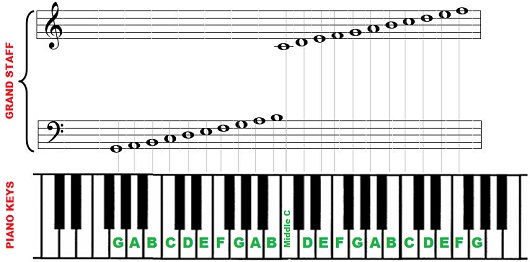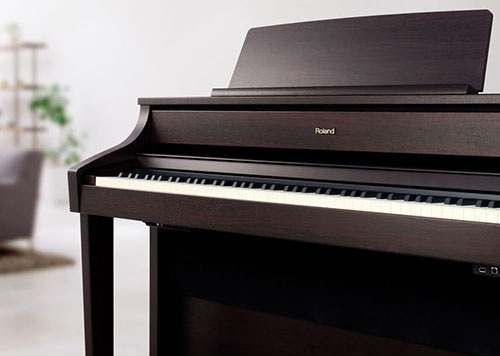Whether you’re a student or a teacher of piano, books are your friends. These are basic piano library lessons books that are perfect no matter where you are on your piano journey.
Having a library of piano lesson books allows you to easy access to make sure you’re getting the most out of your practice sessions. Even the best piano players need to return to the basics to refine and refresh their piano skills. A professional pianist can spend hours a day practicing.
Another benefit of having numerous piano lesson books is being able to use them if you teach yourself. Also, books are easy to store and accessible when you’re ready for practice or performance.
Jump to our specific book recommendations using one of these links:
Before buying piano lesson books, be sure to review the material in the book.
Is it for:
- Beginners
- Advanced/intermediate pianist
- Technique
- Warm-ups
With so many books out there, here’s a few bound to have permanent places in your piano bench. You can purchase sheet music and books directly from Merriam here.
Top 5 Best Beginner Piano Books to Get You Started
1. Basic Adult All-In-One Course: Lesson-Theory-Technic: Level 1

This book’s piano lessons are thoughtfully structured for the beginner student and pianist looking for a refresh alike.
Willard A. Palmer introduces a bit of music theory at the beginning of each lesson in order to set the stage for what’s to come. He then craftily chooses perfect pieces for the theory in the chapter. The pace is great for beginner piano players.
You won’t be disappointed or discouraged when working through this book. Instead, you will find yourself empowered and encouraged.
Palmer makes sure to design his lessons in Adult All-In-One Course: Lesson-Theory-Technic: Level 1 to lift up learners as they gain skill. Progressively, the music will get more difficult while also feeling possible.
There’s a variety of music inside, too. Blues, classical, popular, etc. You’ll never be bored as a student. And the lessons ease you in with variety while getting progressively harder. It’s well designed to increase your skill.
Buy Here
2. New Classics to Moderns: Book 1

This made the list of best piano books because of its ability to expand your repertoire.
Inside there is a broad music selection of original work. Selected are the best of master composers over the last four centuries.
From Purcell to Mozart, this is one of the best books to learn piano for the eager student wanting to learn several styles.
Cover the last four hundred years of music in a few pages by grabbing this book. You’ll be taken from the classics that started piano to contemporary works shaping modern music.
What’s inside is enjoyable for both the player and the listener alike. It’s unique in its diversity making it a great grab at any time.
This is primarily sheet music. So if you’re looking to learn more theory, other books on the list will be better for you.
3. The Joy of First Year Piano

This is one book in a constantly expanding series of Joy Of… books. In this particular one, Denes Agay guides musicians through a series of piano work sure to increase skill.
The book also comes with audio. Each piece is accompanied by a track boasting a skilled pianist playing the piece.
This series has been chosen by musicians all over the world. They love it for their imaginative choice of material.
It’s also thought of as having consistent settings, a diverse range of music, and a large-format style.
All of these things make it accessible to beginners and advanced players alike.
And this series is constantly growing–making it sure to be a favorite that keeps on giving!
4. Adult Piano Adventures All-In-One Piano Coursebook 1

This piano adventures level is a book by Nancy Faber is terrific for beginners.
It breaks musical theory down into small, digestible chunks for the reader. Each lesson teaches enough theory to play a piece with plenty of time to learn before moving on.
This book is a great place to start learning the piano even if you’ve never read music before.
It made the list of best piano books because of this: By the end of this first book in a series, you’ll be proficient at playing some songs with both hands on the piano.
And understanding basic bass and treble staff theory at the very least as a takeaway.
The pacing is perfect for beginners. You won’t feel overwhelmed and you’ll feel competent in each lesson when it’s over.
From kids to seniors, this book gets raving reviews. You’ll definitely want it to be on your shelf.
Faber piano adventures book is perfect for you if you’re starting at square one when it comes to piano.
Buy Here
5. The Complete Idiot’s Guide to Music Theory

Don’t let the title embarrass you! Buy a book cover if you have to because this one is definitely worth the read.
This book by Michael Miller takes convoluted musical theories and breaks them down into easily digestible chunks for beginners.
It can be a great complimentary guide to put your piano lessons to good use.
It has key ingredients for success. It’s engaging, simple to follow, and full of content that can help any level of pianist improve their skill.
It’s an excellent choice for the beginner. Miller takes thorny concepts and breaks them down with amazing clarity.
The book is a good read for any musician. Which makes it a solid foundational read for the beginner pianist.
The Complete Idiot’s Guide to Music Theory isn’t for everyone starting to play the piano. If you’re looking to get your hands on the keyboard right away, this isn’t for you.
Pick this book up if you want to go in-depth with musical theory. You will have a deep understanding by the end of the pages.
Top 5 Piano Books for Kids Just Starting to Play
1. Music For Little Mozarts

If you’ve got kids aged between 3 and 4 years old, they can start to develop a love for piano even then. They might not be virtuosos but the ability to be able to remember and perform a simple tune on their own might be enough for them.
While you can’t always expect the same kind of attention and focus that you get from older kids, some smaller kids are simply drawn to the keyboard.
With the help of this book, all of the keys on the piano will be color-coded to show them how to navigate the keys. Rather than drawing numbers or letters on your keys, you’ll be able to teach them with the help of this book and its color-coded system.
In level one, they’ll learn about all the keys and basic notation. By level two, they’ll start being able to read sheet music.
There are four levels in total and through lessons and workbooks, they can get into the nitty-gritty of learning the piano. If you’re a parent who wants to teach fun songs to your kids, the Discovery books in this series can be a great help with that.
Buy Here
2. Alfred’s Prep Course

If you’re dealing with kids who are just starting school, Alfred’s Prep Course is a great place to start. Focusing on kids from 4 to 6 years old, these books can go slowly for some kids but might be the perfect place for total beginners.
You’ll be able to give them the basics in a fun way that engages their imagination. With the help of the characters in the books and an interesting illustration style, they can dig into the story as they learn.
There are cool alien characters that most kids are a fan of.
This fairly universal series can underscore lessons learned in Music For Little Mozarts or be a supplement for kids that are getting a start around kindergarten to second grade.
Buy Here
3. Alfred’s Basic Piano Library

Your next move should be to check out the following new release in Alfred’s series. This basic book can start getting students to understand the notation of music and what the concepts mean. Understanding how they fit together provides a useful context for kids who are serious about getting into music.
While they focus on simple and fun tunes like Jingle Bells and Old MacDonald, these books present a lot of information in a simple way. It’s almost deceptively simple how easily kids start to digest intervals, staff reading, flat notes, and sharps.
If you’re looking for a solid foundational book to either start with or to build from an earlier series, this can be a solid primer for what’s to come.
Buy Here
4. Bastien Piano Basics Primer

Bastien has its own method of teaching kids to play the piano. While it might not be the exact method book you would use, they’ve had more than enough success to justify their approach.
If your kids are aging out of the previously mentioned books, it’s time to roll these out. Original piano music is studied under Bastian, with pop and classical getting the most attention.
All the books in this series fall in line with their lessons in music theory and playing technique. Performance is placed on an equal footing with technique and it’s all meant to come together in a logical sequence. With fully illustrated pages and colorful charts, there’s a lot to be attracted to one every page.
Buy Here
5. Hal Leonard Piano Method
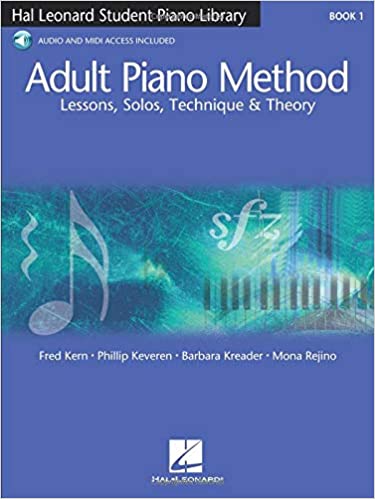
This first book in the Hal Leonard piano series starts with numbering the keys. If color-coding or teaching the grand staff isn’t working, then it might be time to try Hal Leonard’s method.
By learning about simple rhythmic patterns on both the white and the black keys, kids get practical experience as they learn. They’ll learn the difference between clefs and tonal ranges while also getting a quick primer level on intervals.
With fully illustrated, colorful pages, there’s no way for kids to get lost. They even include illustrations to demonstrate finger placement so that kids can build a strong playing method from day one.
Buy Here
These are the Best Intermediate/Advanced Level Piano Books
1. The Giant Book of Music
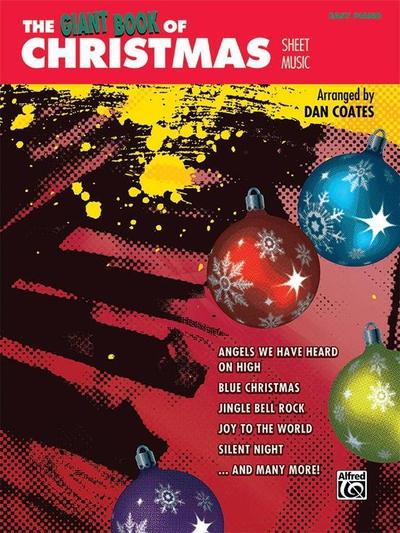
Schirmer’s Library of Musical Classic is known to everyone that has various books for beginners, intermediate players, and masters, as well. Here is a book for intermediate players, “The Giant Book.”
The book is specially written, keeping the Classical composers in mind with 269 pieces, which is maximum among every other book listed here. The assortment of classical music is perfect, and everyone can play with the help of this book which makes this as the top seller in amazon.
Buy Here
2. Classics to Moderns for Intermediate Players

This book has 115 original piano pieces written by most favorite artists that have been published by the most reputed print music publisher Hal Leonard LLC.
The book is well-tuned in for the sight of the readers to understand. Once you go through this book, you will surely enjoy playing because it has on point notes for classical music and has ample options to look for in it.
3. Easy Piano Classics

It is the world’s most beautiful classical music book ever with 97 pieces of art for every intermediate player. Even every best composer’s art piece is portrayed with utter ease that makes this the most successful book is also the best seller til’ date.
This book offers high-quality notes and instructions which have a rich selection of compositions and it is remarkably low priced and easy to understand that would guarantee to master you in paying Piano just like a boss.
Buy Here
4. WunderKeys Intermediate

The book is a full package of deep and soothing music learning and it is jam-packed with a pop-infused piano study for intermediate players.
It is a visually engaging book due to its simple explanations and presentation of the work that works out on some specific keys of C Major, A Major, G Major, E Minor, F Major, and D Minor.
5. John Thompson’s Piano Course for Intermediate Players
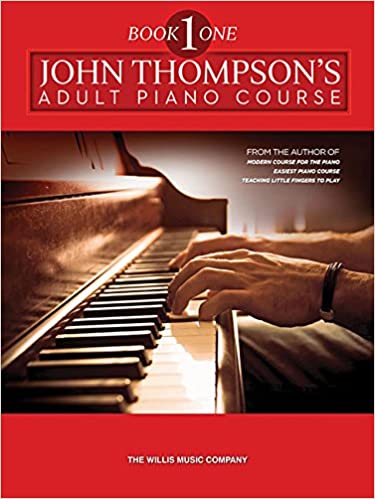
The book complies with maturity and peace of mind so that you get a clear picture to learn that had the most reasonable book for every player to learn to play the Piano.
The best part about the book is that it is re-engraved and updated which makes this the right study material for intermediate students with a wonderful mix of classical arrangements.
These are the Best Piano Books For Adults
1. Alfred’s Basic Piano Course Lesson Series

The Alfred’s series is popular with students of all ages. In the basic series, the lessons progress in small steps that are easy to follow. The instructions are easy to replicate and follow.
You will learn the names of the piano keys–first white, and then black. This book is one of the most sought after for beginners and a great step toward your education!
Buy Here
2. Alfred’s Basic Piano Course Theory Series

This book is created to be an accompaniment to the beginner series, but it can also stand on its own. This book is great if you want to learn more about musical theory, and the inner workings of your piano.
Theory books can be combined with practical ones to make for a more well-rounded education.
Buy Here
3. Alfred’s Basic Adult Piano Course All-in-One

Each section of this book covers a piano lesson, musical theory topics, and technical information about music and the piano. This book is one of the most recommended books out there for adults.
You can see why the Alfred book series is so popular for beginners now, right? They’re the perfect addition to your piano learning collection.
Buy Here
4. Hal Leonard Student Piano Library Book 1

This workbook is designed so that even the most inexperienced beginner can start creating music from the very start of their studies.
It’s chock-full of simple instructions, illustrations, and even a CD that you can follow along with. This book makes it easy for you to learn how to play right in the comfort of your home.
The book can teach you the basic practical stuff, and a piano teacher can fill in the blanks with musical theory.
5. John Thompson’s Easiest Piano Course

The name isn’t false advertisings. The lessons in this book are some of the easiest to follow that you will find. Each note in introduced to you one at a time and the lessons are reinforced with colorful illustrations and characters.
This book comes complete with writing and reading assignments for those who learn by doing. It’s a great accompaniment to have while learning from a piano instructor.
Buy Here
6. Ultimate Beginner’s Series

Some of these other books on this list are great if you’re new to the piano and are dedicated to learning. They are not good, however, if you learn at a fast pace. You might become annoyed with how slowly these take you through the steps.
The Ultimate Beginner’s Series will save you from that slow pace. This book uses DVD’s and text as a team to get you right in the world of the piano. It can teach you about chords, arpeggios, playing with both hands, even playing by ear.
This book pretty much covers everything you need to know before and after you seek out the help of a piano instructor.
7. Bastien Piano for Adults

This book was made for your special needs in mind. It includes song samples from all different kinds of genres like jazz, blues, ragtime, and classical.
The lessons are more progressive than children’s books as far as music theory goes. In addition to the easy to read text, it also comes with a CD to help you follow along.
This book will also help you with your understanding of tempo and timing. It’s a great book for music theory and practical learning.
Buy Here
8. Faber Music Piano Aventures

This book takes a different approach to learn that you might find interesting. This Faber music book encourages you to experiment with the piano peddles in order to understand how they really function.
It’s fueled by lessons that focus on the middle “C” position. You will become more aware of the notes behind the keys thanks to skill exercises and information on musical theory.
Buy Here
9. The Complete Idiot’s Guide To Musical Theory

You might be embarrassed by being seen in public with this book, but there’s no shame in it at all. This book can actually really help you if you’re a beginner. If you think you have no talent for music, this book can help prove you wrong.
This book doesn’t just focus on piano, but a wide range of music theory from piano to vocals. A beginner can become overwhelmed by music theory as it can get a little confusing after all. The Complete Idiot’s Guide will clear up this confusion for you.
It’s one of the best piano lesson books for adults. Books can only go so far though, reading is no substitute for actual hands-on playing. Here are a couple of easy warm-ups that you can do before your lessons each day.
Best Piano-Teaching Books for the Teacher
1. Hanon: Virtuoso Pianist in 60 Exercises

An older (over 100 years old!) but timeless and a best-selling piano book, Virtuoso Pianist is used by many teachers to perfect technique for their students. When a book sells over a million copies, it’s wise to consider using it for students!
Buy Here
2. Piano Adventure Series

Teaching theory can be dry, but Piano Adventures makes the transitions sensible and understandable. The music is upbeat and fun for kids, and something piano teachers can tolerate! Piano Adventures also carries repertoire music for practice.
Buy Here
3. RCM Celebration Series Piano Etudes

Filled with materials to teach your students theory and technique and music from the Baroque era, RCM Celebration Series piano book provides an engaging learning experience. There are 10 books in the series and each contains instructions to access recording online to enhance your experience.
Buy Here
4. The Music Tree Activities Book 1

This book provides a solid foundation to help younger students with sightreading.
5. Piano Adventures Sightreading Book Level 2A

Another Piano Adventures book focused on sightreading. Help your students study musical patterns and instill a greater understanding of the ins and outs of sightreading.
Buy Here
For Warming Up
1. Preparatory Practice
This book includes sixty warm-ups to prepare you for practice. This book was composed for the young pianist.
2. A Dozen a Day
Designed to be played before practice, A Dozen a Day is a piano book for any age. A very popular piano book on the market for warming up.
3. Bastien Piano Technic Book 1
Get flexible fingers with Bastien Piano Technic books. This book has elements of theory and performance to create a robust practice session.
Songbooks
Technique and theory are not the only important factors when practicing piano.
Performance is just as vital!
It’s nice to take a break from theory and technique and focus on creating beautiful music, and playing songs from songbooks can help you enhance your performance.
Songbooks will vary greatly from pianist to pianist depending on their taste in music.
Here are other few according to level:
Beginner
- Alfred’s Basic Piano Classic Themes Level 5
- Alfred’s Basic Piano Top Hits Christmas Complete Level 1 For The Late Beginner
- Accelerated Piano Adventures For The Older Beginner Popular Repertoire Book Level 2
Early Immediate/Immediate/Advanced
- Alfred’s Recital Book Level 3
- Jazz, Rags, and Blues Book 2
- FunTime Piano Favorites Level 3A-3B
- Current Hits for Students, Book 3
Where to Find Piano Lesson Books
With so many piano lesson books to choose from how do you know the best place to buy?
If you’re feeling impatient by the slow pace of some of these books, you might be interested in some of these helpful tips for learning the piano faster.
Merriam Music carries over 3000 lesson books from popular publishers, and their library keeps growing. Their music school, Merriam Music School, also is a highly-esteemed school, featuring instructors with advanced degrees, and pairing students with their ideal teacher. They know their stuff!
Buy Here
2359 Bristol Cir #200, Oakville, ON L6H 6P8
43.518258
-79.676500









































